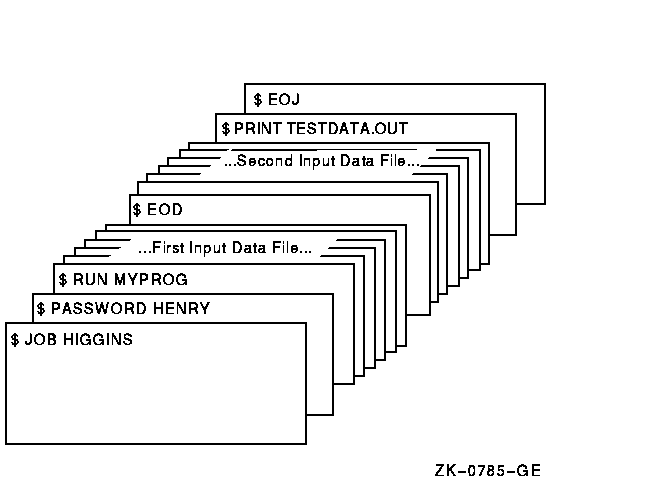| Previous | Contents | Index |
Signals the end of a data stream when a command or program is reading data from an input device other than an interactive terminal.
$ EOD
None.
The EOD (end of deck) command in a command procedure or in a batch job does the following:
- Terminates input data lines that begin with dollar signs ($). The DECK command indicates that the following lines begin with dollar signs and should be interpreted as data, not as commands; the EOD command indicates the end of the data lines.
- Terminates an input file if multiple input files are contained in the command stream without intervening commands. The program or command reading the data receives an end-of-file (EOF) condition when the EOD command is read.
The EOD command must be preceded by a dollar sign; the dollar sign must be in the first character position (column 1) of the input record.
| #1 |
|---|
$ CREATE WEATHER.COM
$ DECK
$ FORTRAN WEATHER
$ LINK WEATHER
$ RUN WEATHER
$ EOD
$ @WEATHER
|
In this example, the command procedure creates a command procedure called WEATHER.COM. The lines delimited by the DECK and EOD commands are written to the file WEATHER.COM. Then the command procedure executes WEATHER.COM.
| #2 |
|---|
|

The program MYPROG requires two input files; these are read from the logical device SYS$INPUT. The EOD command signals the end of the first data file and the beginning of the second. The next line that begins with a dollar sign (a PRINT command in this example) signals the end of the second data file.
| Previous | Next | Contents | Index |